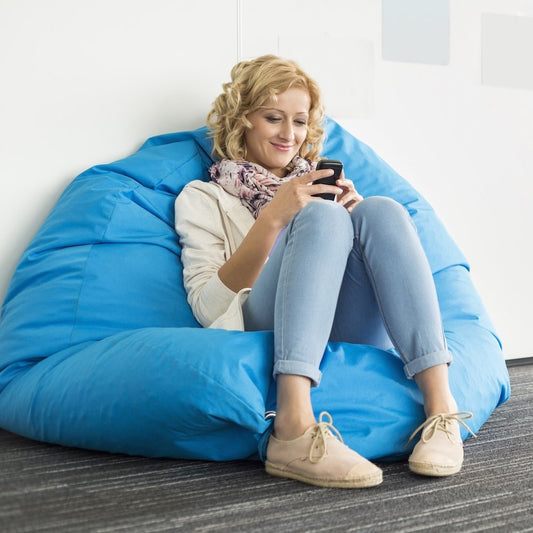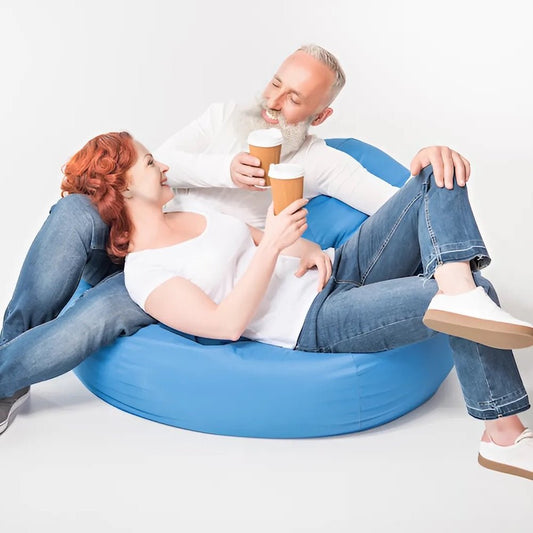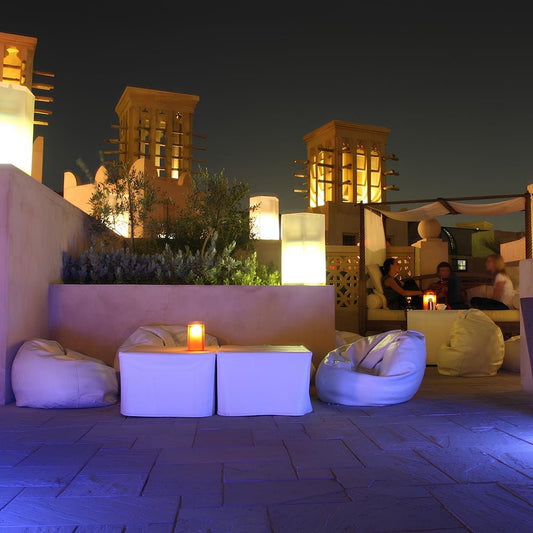It's commonly known as "poly-coating," but PU coating is polyurethane applied to the surface of a fabric. Polyurethane is a type of polymer. A polymer is a synthetic compound made from petroleum residue. PU coating on fabric is the best option to ensure the material doesn't get ruined. PU coating on fabrics like polyester, nylon, cotton and leather act as a base material on one side of the material. It's a protective film that's usually applied to one side of the material.
Fabrics that have PU coating are more lightweight, water-resistant, and flexible. The protective PU coating on fabric is single-coated when it occurs on one side of the material. It can also be multi-coated when it's applied to both. Sometimes polyurethane is applied to polyester. But most of the time the polyblend material has been heat-laminated. Several industries invest in polyurethane fabrics. Pharmaceutical companies and diaper companies use them as much as those who make activewear and pet products.
Properties Of Polyurethane
We've talked about what PU coating on fabric is. Polyurethane fabrics are breathable and lightweight. Clothing made with PU coating will hold properties even when it's gone through the washer and dryer over 100 times. The material will not be harmed or come apart. Hospitals were the original intention of PU coating on the fabric as hospitals require reusable materials on bedding and scrubs. Polyurethane is durable and waterproof, and hospitals especially are one place where strong and waterproof fabrics are not just a "like to have" - they are a must.
PU coating on fabric is useful to create a variety of thicknesses. It is one of the most versatile structures on the market. The thickness of the material generally depends on its intended use. The fabric can be thinner in diapers as opposed to fabrics used for camping gear. But, either way, it remains as durable and waterproof as it needs to be. Polyurethane fabric can be fire-retardant, airtight, and abrasion/humidity resistant. It is suitable for a variety of applications. It's flexible enough to be used on more than one kind of material. Manufacturing companies tend to use it on one side of the material rather than both sides.
PU Fabric
Polyurethane fabric can provide the best imitation of leather, primarily if the material is gathered or stitched in any way, the PU coating on fabric wrinkles in the same way that real leather would do. PU coating on fabric includes resins that are unlike vinyl - they do not need plasticizers and are made instead of a softer polymer. Because there are no plasticizers, there's no cracking or splitting in the material.
Polyurethane fabrics are preferable in furnishings for this reason. The material will last for some time, and they're easy to decorate. One of the biggest pluses of PU coating on fabric is that the material is a greener option than vinyl. It does not create dioxins, and so it's better for the environment. It's also far cheaper to buy as it's less expensive than real leather - it's still more costly to produce than vinyl, though.
About Polyurethane Resin Systems
Did you know that all fabrics coated with polyurethane contain polymer resins? There are three different types of resins in the PU coating. These include:
- Polycarbonate. Also known as PC, this is a popular resin as it's so durable and has a high heat and light resistance. These resins are suitable for commercial upholstery furnishings and other industrial applications. Buses, trains, and aeroplanes use this material as it's hard-wearing and still soft to sit on.
- Polyester. Polyester resins (PES) are suitable for low activity commercial applications. So, headboards and pillows get the use of PES as they are low resistance to heat, light, and humidity, and it works exceptionally well.
- Polyether. PET resins are used in a lot of commercial applications as they offer an excellent option as they are resistant to humidity, light, and heat.
- Of course, all of these three can be used both individually and in a combination of materials. The cost varies depending on the quality of the resin. There are other performance additives used, and these are required before a polyurethane fabric is safe and ready for commercial usage. PU coating on fabric is also known for its colour-fastness as well as its heavy stain resistance. Adding new chemicals can help the performance of the material, allowing it to be resistant to abrasion and flames.
- PU Coating On Fabric - The Manufacturing Process
- The choice between processes of manufacturing polyurethane-coated fabrics is an easy one as there are only two processes - wet and dry.
Wet Polyurethane Process.
The wet process includes coating a coagulated base on a substrate backing. The wet process uses any of the resin system combinations we talked about earlier, with an adhesive layer is applied to the bottom and another to the top. Topcoats are those that are coloured and designed. This process is mostly used in upholstery today.
Dry Polyurethane Process.
While the wet process has a coagulate base, the dry method doesn't use it. The polyurethane adheres to the face of the backing. This process offers a chemical reaction to provide much better strength and performance. Two resin systems exist here: a solid polycarbonate and polyether-polycarbonate. Higher quality resins are processed in a better, more environmentally-friendly manufacturing environment, too! Almost 100% of solvents are recaptured, before being recycled over time. The drying process also uses 25% less energy than the wet process we mentioned above.
PU Coating On Fabric: Things To Consider
There are plenty of positives to using PU coating on the fabric. Below, we're going to detail some of the benefits of PU coating on the fabric, and you'll then have a good idea of how great PU coating on fabric can be!
Environmentally Friendly.
We've just touched on the fact that the dry process for polyurethane is environmentally friendly as an option. Polyurethane fabric doesn't use solvents, and it doesn't produce harmful toxins, either. Similar materials to polyurethane - such as PVC - are not biodegradable. They contain chloride, and yet PU coating on fabric does not require the same chemicals. The material itself is strong, durable, and waterproof, and it withstands high levels of heat. PU ensures a reduction in waste and is ideal in things like life vests. Using PU allows for more extended periods than other materials do.
Easy To Clean
Polyurethane fabric is one of the most durable materials for furnishings. It's a popular option given its ability to block moisture, which means that it's easy to clean. Stains can be removed easily with soap and water. Use diluted bleach or other spirits on the blends of PU coating on the fabric that is solvent-resistant. It's not advisable to use harsher chemicals like acetone or vinegar, as the material can be affected and look damaged. Most items made with PU coating on fabric have labels that give you instructions on how to keep it clean. The care instructions should be adhered to, as you can ruin the fabric blend if not careful.
The History of Polyurethane Application
You can see the application of PU coating on fabric over time. Below, we've put together a timeline of the history of polyurethane fabric. Ready?
1937
The basic polyurethane chemistry was discovered here, in 1937 at the IG Farben Laboratories. Dr Otto Bayer made the discovery!
The 1940s
Throughout the 1940s, polyurethane started to replace rubber. It's an organic polymer that is versatile. The coating was used for the impregnation of paper and mustard gas-resistant clothing. It was also used in the war for high-gloss aeroplane finishes. Polyurethane was an excellent replacement for scarce materials during the war. It was a chemical and corrosion-resistant option to protect wood, masonry, and metal. In the late 1940s - 1948 DuPont Corporation made polyurethane commercially available via a rigid foam. This was used during the manufacturing of beer barrels to act as insulation. From here, BASF, Dow Chemical, and Mobay Corporation introduced polyurethane material.
The 1950s
Sneaker soles were the first use of synthetic polyurethane leather in the 1950s. From here, foam seat cushions began in Europe for commercial production, soon moving to the US for production. Flexible polyurethane foam was the material of choice for car seats and furniture upholstery.
The 1960s
Going back to DuPont, polyurethane was being used in clothing. The original Spandex fibres used by DuPont were rebranded into Lycra, soon to become the most figure-flattering swimwear on the market in history. From swimwear, PU coating on the fabric was used on ski clothing - given its waterproof materials; it was the best option. This occurred in 1968, but before this, polyurethane was used in the automobile industry for upholstery. Bayer AG Corporation introduced polyurethane to the all-plastic car in Germany in 1969.
The 1970s
In the hunt for a material that was waterproof, heat resistant and strong, cyclists in the 1970s realized that PU coating on the fabric was going to be the best option for aerodynamics on the trails. Spandex shorts were the better option as a versatile exercise clothing option, and so cyclists and other athletes have the best possible option. In the late 1970s, polyurethane was used as a spray for building insulation. This was in response to the rising energy costs, which stopped the use of PVC.
The 1980s
Spandex was most popular in the 1980s, with a huge presence in the hosiery sector. When the trends began for Spandex to be worn as regular wear as well as in the gym, clothing like leggings and Chanel skirts began to use the material for movement and comfort. It was also in the 1980s that polyurethane foams were being used in automobiles for the safety of passengers.
The 1990s
Polyurethane was starting to be used in the thin wall medical hoses in the early 1990s. For example catheters. These are better used with polyurethane as they are better for the environment.
The 2000s
A big shift in the efforts of industries becoming more environmentally friendly began in the early 2000s. Polyurethanes were being made from vegetable oil polyols, such as soy-based polyurethane as used by Ford. Rimowa also introduced the first polycarbonate suitcase in the 2000s. It was lighter than earlier aluminium luggage options and it started the trend for hard-shell luggage.
The 2010s
And we arrive in the 2010s, where we have just left. The Mitchell Group introduced the first dry-erase ink and stain-resistant PU upholstery fabric - Sta-Kleen. In 2017, the same company introduced Sta-Kleen Polycarbonate. A polyurethane made from 100% PC resins. Polyurethane accounted for $1.1 billion in sales in the US in 2016, which is a huge win for the product. It's a primary material for pet-related products, beanbags and canopies as well as life vests and boats. The diaper industry also uses polyurethane fabrics as a replacement for disposable options. As you can see, PU coating on fabric has MANY uses!




